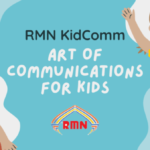
Childhood Lead Poisoning Prevention Campaign
Childhood lead poisoning is considered the most preventable environmental disease among young children, yet an estimated 1 million children are affected. A simple blood test can prevent permanent damage that will last a lifetime.
If lead poisoning is not detected early, children with high levels of lead in their bodies can suffer from damage to the brain and nervous system, behavior and learning problems (such as hyperactivity), slowed growth, hearing problems and aggressive behavior.
The Coalition to End Childhood Lead Poisoning, U.S. Environmental Protection Agency (EPA), and U.S. Department of Housing and Urban Development (HUD) are joining the Ad Council today (Oct. 24) to unveil a new series of national public service advertisements (PSAs) to raise awareness about childhood lead poisoning.
The PSAs are being distributed to kick off National Lead Poisoning Prevention Week (NLPPW). Additionally, the campaign’s social media presence through Facebook and Twitter will reinforce to parents, caregivers and pregnant women that if their home was built before 1978, they should have their child tested for lead poisoning.
The most common pathway for lead poisoning is caused by deteriorating lead-based paint (on older windows, doors and trim, or walls) or through improper renovation, repair and painting activities that cause paint to chip, peel, or flake.
Children are frequently poisoned by ingesting lead dust that has accumulated on their hands, fingers, toys, or clothing from lead hazard sources like floors and windowsills.














